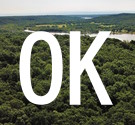Geographical Index > United States > Iowa > Dubuque County > Report # 30530
(Class A)
Submitted by witness on Thursday, September 1, 2011.
Late afternoon sighting of a road crossing on Hwy 52 north of Dubuque
(Show Printer-friendly Version)
YEAR: 2011
SEASON: Summer MONTH: August DATE: 31st STATE: Iowa COUNTY: Dubuque County LOCATION DETAILS: Heading north out of Dubuque on hwy 52 north. stay on hwy going past BP gas station and is roughly 15 min beyond that point on the left. NEAREST TOWN: Sageville,Iowa NEAREST ROAD: HWY 52 North OBSERVED: On Aug 31st I was on my way home from work in Richardsville, Iowa. There has been lots of road work on this HWY 52 North so I wasn't expecting to see anything out of the ordinary which is typically deer,coyote, or a fox on a rare occasion. I was just about 10 to 15 min north of Sageville, IA on 52 north when to be coming around one of the curves of this winding road when I saw a dark figure in a forward lunging position running at the same time leap over the guard cable and as i was passing that very spot I could clearly see its dark shorter hair and its shoulder and upper arm as if being lifted to clear the thick bushes. I pulled over and turned around at the next driveway and stopped and ran back to that point of entry but by that time it was gone! no noise so it may have found cover quickly and I couldn't see it. it appeared to approx 6ft tall and well built upper body and very thick muscular legs. its head was long and cone shaped. It looked to weigh around 300 pounds or so.I returned the next day but found no prints. was too thick to get into and see. this was around 5:15 to 5:30pm in the early evening. ALSO NOTICED: none OTHER WITNESSES: just myself OTHER STORIES: no TIME AND CONDITIONS: between 5:15 and 5:30pm. It was sunny and calm and the road const. was surprisingly wrapping it up early. ENVIRONMENT: very thickly wooded and thick brush. also has a hiker trail on that side of hwy
Follow-up investigation report by BFRO Investigator Steve Moon:
Witness had been driving south toward the city of Dubuque at the end of a work day, and observed a large hairy upright creature crossing the highway in front of him. He was traveling at normal highway speed, and moments after he saw the figure cross in front of him he looked to his right just in time to observe the figure as it disappeared into the thick undergrowth of the heavily timbered landscape.
Witness clearly saw the creature's shoulder and up-raised arm as it entered the woods. He immediately turned around in a driveway and returned to the spot where he had observed the road crossing. He parked along the side of the road and went to the spot where he had seen the creature enter the woods but didn't see, hear or smell anything unusual. Witness used his cell phone to capture exact GPS coordinates for the place where the creature had crossed the road.
I interviewed the witness by phone a few days after the encounter, and then again a few months later. Witness added that it was the left shoulder of the creature that he saw as it entered the brushy undergrowth. When asked to recount the experience he observed that the creature was crossing toward the river. He again provided a very detailed description of the figure that he had seen. This was a road crossing at close range during daylight hours, and the witness was able to observe it very clearly.
This road crossing occurred on the edge of the Little Maquoketa River which is a tributary stream of the Mississippi River to the east. The Little Maquoketa River drainage basin is quite small, including just under 40 square miles, all within Dubuque County. The river and its numerous tributary streams are lined with steep, nearly vertical limestone bluffs and slopes which are heavily timbered. There are five very small towns in the basin, and only a few small housing developments. For the most part, the basin is fairly wild. This unusually small drainage basin has developed in bedrock that has a very active hydrologic regime, with many springs along small streams that feed into the Little Maquoketa River.
Between the highway and river is a well developed and manicured walking and bike trail. Because the Iowa DNR charges a fee for use of this trail it is not heavily traveled. The "Heritage Trail" runs through several of the intersecting valleys along tributary streams of the Little Maquoketa. These "rails to trails" are developed on old rail beds. The basin is part of one of the oldest lead mining districts in the Upper Midwest, and these rail lines were developed to transport lead and other commodities as well as passengers. A bed and breakfast web site for the nearby town of Durango reports that there are 25 miles of walking trails.
Directly below the point where the road crossing occurred there is a very large spring. Directly above it, where the creature is assumed to have come from, is a draw which intersects the ridge that follows the river on the north side. There is a small development of a half dozen or so expensive houses on the ridge directly above where the road crossing occurred, and a wide power line right of way cut through the timber that runs east and west toward the Mississippi River, on the back side of that ridge. The witness is very familiar with this ridge, and used to hike and hunt the ridge top. He was a spelunker for fifteen years in his youth, and stated that there are a lot of abandoned lead mines in the immediate area, some of which are not closed up. There are also a lot of natural rock shelters and caves.
Witness stated that there are a lot of old apple trees in the woods directly up-slope to the north of where he saw the creature, on top of or just on the other side of the ridge. There is at least one major vineyard nearby, on the south side of the river basin.
Witness further stated that road kills on the small highway that runs through this basin don't last long. On more traveled highways in the area road kills stick around for days or weeks. On this little road he noted that a raccoon would be dead on the road in the morning, and on his way home from work that night it would typically be gone. He said a dead deer doesn't usually stick around longer than one day.
The archaeological record of habitation in the basin of the Little Maquoketa River stretches back several thousand years. Of note are a group of burial mounds near the mouth of the basin where it enters the Mississippi river canyon, on the south side of the basin. The Mound Builder culture, which existed in the region about 1,000 years ago was quite extensive, inhabiting several of the major tributary rivers of the Mississippi, including the Ohio River to the east.
The Mississippi River is North America's largest and longest river. It is a major flyway for migrating birds, and in northeast Iowa is an avenue of travel for a variety of mammals, including bear and mountain lion.
I previously investigated and published a report (25071) about another encounter that this witness had, also near the city of Dubuque, Iowa, which is situated on the Mississippi River. During this previous investigation I and another Upper Midwest BFRO investigator camped overnight and got to know the witness fairly well. I consider him to be extremely credible and a very astute observer.
About BFRO Investigator Steve Moon:
A native of southeast Iowa, Steve has long been a cave explorer and outdoor adventurer. He became involved in bigfoot research in 2008. Steve organized BFRO IOWA Public Expeditions in 2011, 2012, 2013, 2014 and 2016, and is currently organizing a 2017 IOWA expedition. Steve is an artist, photographer, farmer, anthropologist and professional researcher. His primary research areas are the river basins of the Mississippi River and its tributaries, and all of eastern Iowa.
|
























